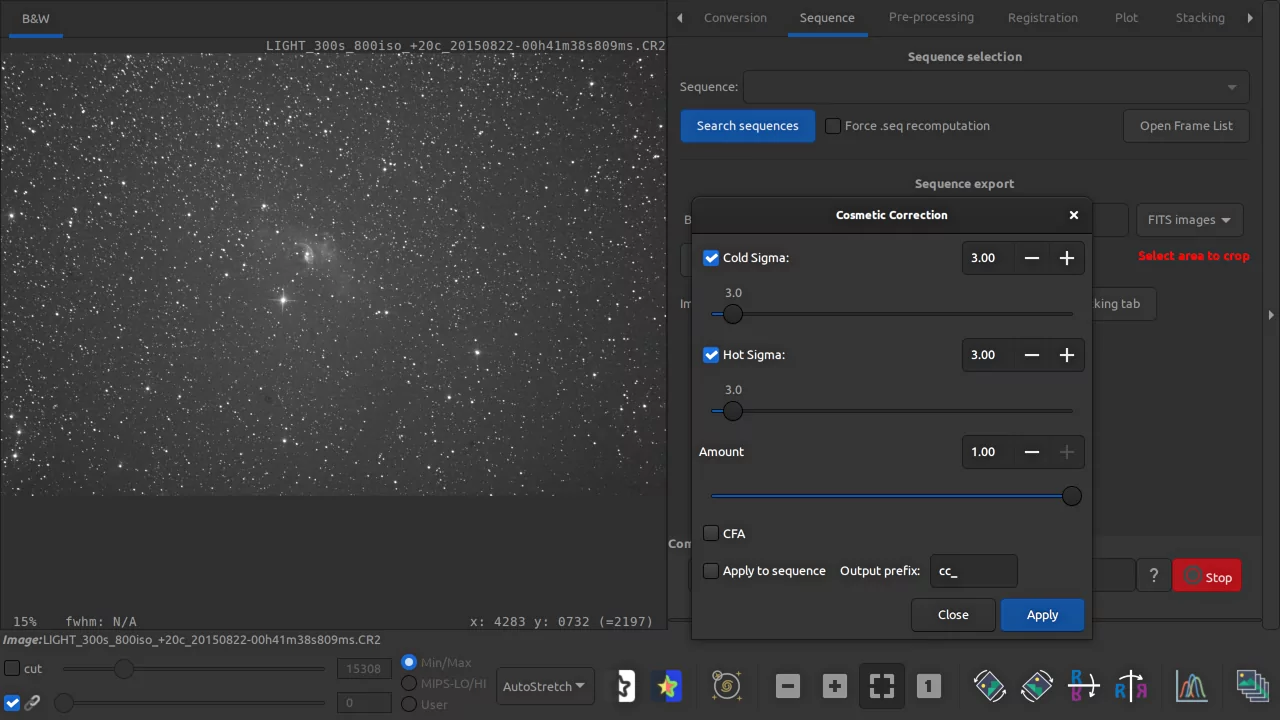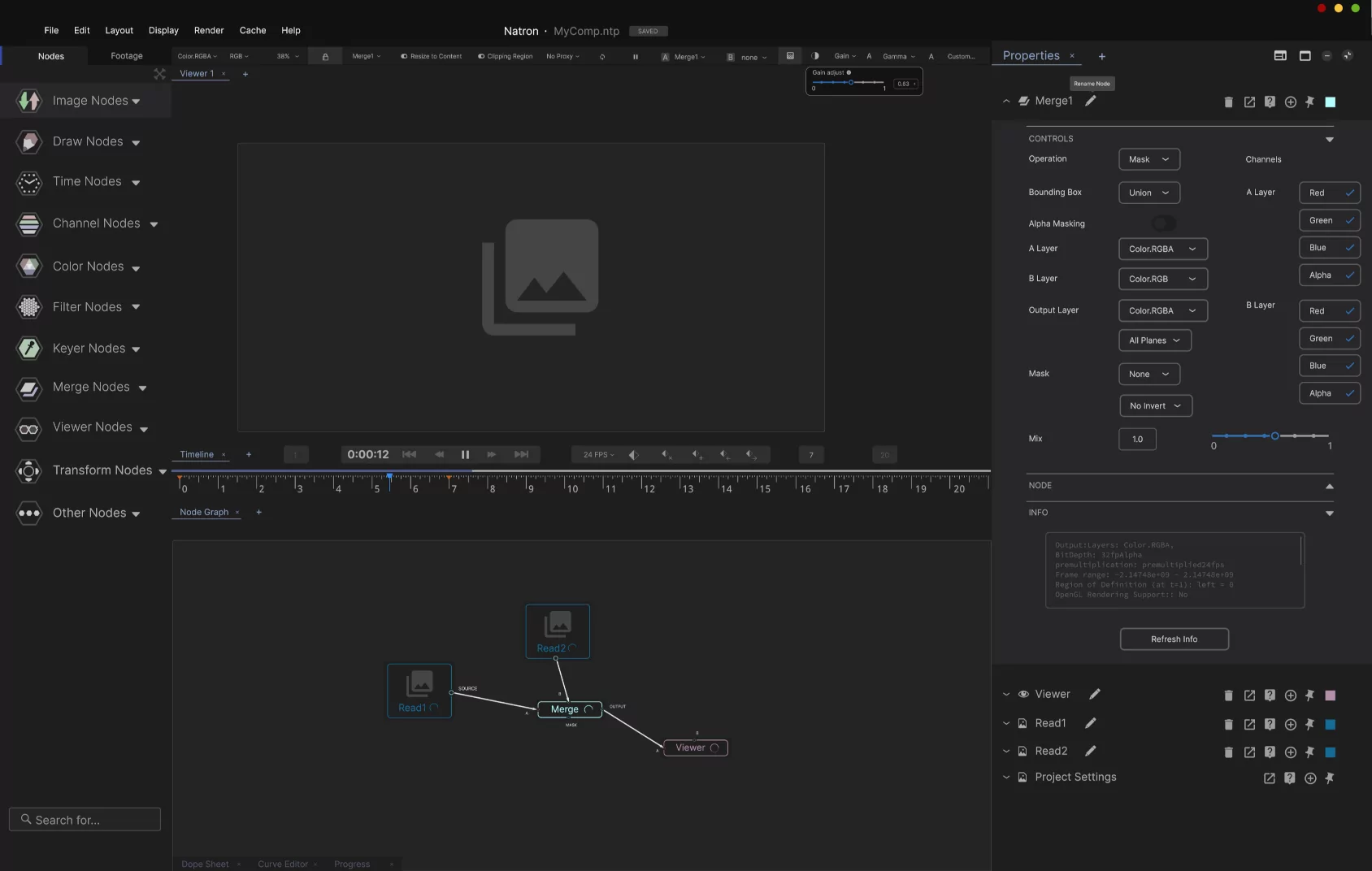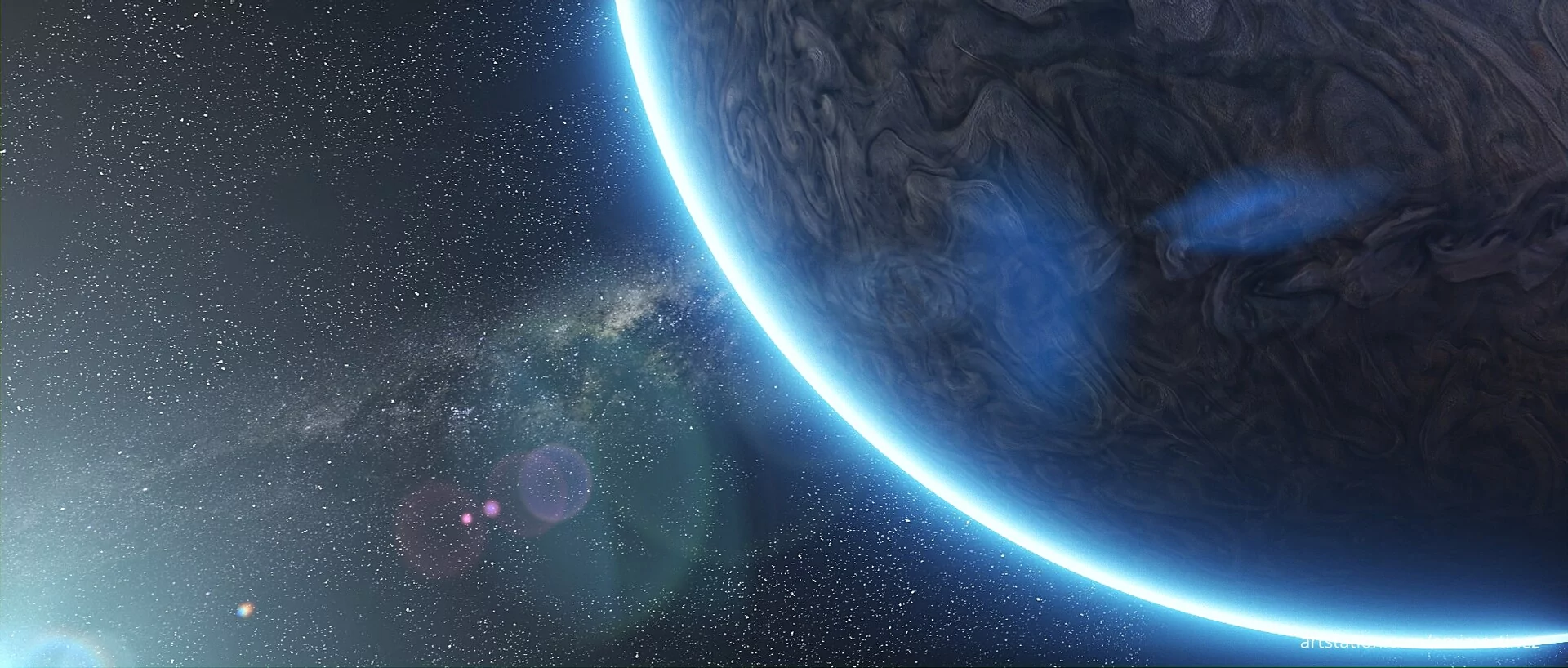There are many reasons to look back at 2020 with a whole range of emotions but I would rather look forward.
Graphics
The GIMP team is now focusing on completing version 3.0. It’s too early to say if it will be out in 2021. But unless everything changes dramatically, we’ll see several more 2.99.x releases at the very least.
Feature-wise, not much new is planned, although there’s a new Paint Select tool being worked on by Thomas Manni. And before you ask: no, it’s not AI-based. It’s also designed to do quick binary selection for now, so not very good for selecting strands of hair and suchlike.
Admittedly, I avoid talking about Glimpse and Glimpse-NX much. I have two major reasons for that.
First, every public conversation about the fork of GIMP ends up in someone attacking either the Glimpse or the GIMP team, and that’s unproductive and tiresome. And then the progress isn’t all that interesting so far.
The fork is just rebranding and no new features or UX fixes (unless removing the bell pepper brush is your idea of finally making it right for everyone), and then Glimpse-NX — at least for the public eye — exists only as UI mockups. They did get Bilal Elmoussaoui (GNOME team) to create Rust bindings to GEGL for them last autumn, but that’s all as far as I can tell.
So the current pace of the project is not very impressive (again, as a GIMP contributor, I’m biased) and I’m not sure how much we are going to see in 2021.
That said, I think having a whole new image editor based on GEGL would be lovely. I don’t see why Glimpse-NX couldn’t be that project. A proof-of-concept application that would load an image, apply a filter, and export it back sounds feasible. It’s something one could iterate upon. So maybe that’s how they are going to play it.
The fine folks over at Krita posted a 2020 report where they listed major challenges they will be facing this year: the completion of resources management rewrite that currently blocks v5.0 release, the port to Apple M1, the launching of a new development fund (akin to that of Blender), and more.
They also have just released version 4.4.2 with mesh gradients, mesh transform tool, new gradient editor etc.
I think it’s safe to say that we might see MyPaint 2.0.2 later this year with some new features and quite a few bugfixes. There haven’t been much groundbreaking development since 2.0.1 released in May 2020.
On the other hand, there are nice new features available in GitHub forks and not all of them have been turned into pull requests. But some were. E.g. there’s a guy who added a perspective mode with vanishing points and all, and it’s almost ready, although it’s been in the works for almost 5 years now.
The topic of fullscreen color management implementation in Wayland is back, and it’s a kinda frustrating story. In a nutshell:
- people who are now working on this (Collabora developers) seem to have little experience with color management but they appear to be motivated to hack on the code;
- all the while people who have a crapload of experience with color management have had bad experience discussing this before, do not like the approach by the new team, and don’t seem excited to contribute to this new effort (Graeme’s spec proposal is still available.
So we might end up with an implementation that is not suitable for professional work. At this point, there’s no telling what will happen. Personally, I keep an open mind about it, but the quality of conversations is not good in a way that there is no visible action in response to substantiated criticism. And so the conversation isn’t getting anyone any further.
Now that Inkscape 1.1 alpha is out for everyone to take for a spin, I’m positive we are not so far from the final release. There is a lot packed into the coming update, see the draft of the release notes. I’m really looking forward to whatever they have planned for when 1.1 is out, there is still so much to do!
Publishing
There will be another 1.5.x release of Scribus that has some new PDF importing features and includes a lot of small but refining UI changes, likely before April. Another release should follow later in the year.
They definitely don’t want major UI changes in the main development branch anymore until they release 1.6, and that sounds like wrapping up for the big release to me. Which means it’s only a matter of how many under-the-hood changes still need to happen.
It’s been a long time since I last looked at Sigil, mostly because I lost my Nook device some years ago and never got to ordering a replacement. Meanwhile, Sigil got better. Like, really better.
They came up with what seems to be a working solution for dealing with both EPUB2 and EPUB3 in the same application, they updated the UI just enough to be recognizable yet somehow nicer, and then they added some boring yet useful utility features.
I do like where Kevin Hendricks and Doug Massay are taking the project to. Version 1.5.0 will probably be out in the first half of 2021.
Photography
Thanks to Aurélien Pierre, the last few releases of darktable introduced a more articulated division between scene-referred and display-referred workflows, and it looks like more people are contributing to that effort now. There are also some interesting things going on in pull requests:
- a new color balance RGB filter working in JzAzBz color space, with built-in gamut checking;
- a new diffusion module to add or remove lens blur, hazing, blooming etc.;
- a new chromatic aberrations correction module that sits in the right place of the modules chain and produces less halos than defringe;
- there’s also a work-in-progress option to correct lens distortions straight from the RAW Exif for camera vendors that write the distortion in there — I think I mentioned that one in one of the last weekly recaps.
Something you can already play with if you build from Git:
- a new demosaicing method, Ratio Corrected Demosaicing (based on this research), is aimed at reducing pixel overshooting;
- color calibration module can now create an ad-hoc internal color profile from a color checker.
Once again, the amount of contributions is getting large enough for maybe more than one major release a year.
Meanwhile, there are currently 63 bugs that need to be fixed for RawTherapee 5.9 to be released. I can’t give you a ETA for it and I’m not sure anybody can. The project is very active, and if you ever came across its fans online, you probably admired how strongly they feel about RT being superior in processing quality and ease of use as compared to some other tools :)
The Siril team is planning to release version 0.99.8 soon and then hopefully v1.0. They’ve completely rewritten image conversion, revamped memory management, and added astrometry support (6 catalogs supported currently).

Animation
The Synfig team is completing the migration from autotools to CMake, and their next step would be to make it possible to build the program with MS Visual Studio. The expectation is that more contributors would join then thanks to a lower threshold. After that, the rendering code really needs attention.
In 2020, VGC by Boris Dalstein was “pre-incubated” at the BIC de Montpellier startup incubator and additionally obtained a public grant from CNC-RIAM. This means Boris will be able to hire another developer to work on the project.
The situation with enve is… Well, complicated, I guess. In summer 2020, Maurycy Liebner announced that the development is on hold due to health issues. In December, he started pushing some commits to the public repository on GitHub again, not at the old rate though. So it’s unclear if he’s resuming the work.
I think it would help to have some sort of a framework for more people to contribute, even basic things like a roadmap and info for newly arrived developers.
VFX
Natron is one of the projects that I find hard to speculate about. The only active developer right now is Ole-André Rodlie, and his most recent work currently lives in his own GitHub fork. He says he’ll soon start making pull requests to the upstream GitHub project (which, let’s be frank, is a bit like sending PRs to yourself).
There could be a few visual tweaks coming next but unlikely at the scale of a UI redesign that is being discussed on Pixls since May 2020.

However, the new website for the project, designed by the same contributor, has good chances to go live soon. How much that will help attracting new developers is hard to say. Probably not much, as projects like Natron really need full-time involvement (which I discussed at length in 2018, and not much changed since then).
This is a rather sad turn of events, as it leaves us Blender as the only working free/libre node-based compositing solution (unless you count upcoming Olive 0.2 in). Ramen is long gone, and ButtleOFX developers gave up around 2017. And while I love Blender to pieces, the idea that it is the only option is somehow worrying.
3D
Everything Nodes, new asset browser, Vulkan support in EEVEE, new character animation tools and more — all work planned for Blender in 2021 sounds great. There isn’t really much to add here, apart from mentioning that some of these things will be possible thanks to corporate funding.
Version 2.92 is expected in late February, with features like easily drawing 3D primitives, a whole bunch of sculpting improvements, tracing image sequences to Grease Pencil strokes, cryptomatte support in EEVEE, and so much more.
I’d be a damn fool if I left out Dust3D. Jeremy HU did a lot of experimenting in 2020, and this year, his plan is to merge a lot of that into the main program. He’ll do more experimenting with his quad remesher first though.
One major roadblock is writing his own code instead of CGAL libraries that are license-incompatible with Dust3D (GPL in CGAL vs MIT in Dust3D).
But yes, you should generally be looking forward to a new version of the program with better UI, great quads mesh generation, easy creature animation generation, and without complex third party dependencies.
Lubos Lenco is working towards releasing ArmorPaint 1.0 in 2021. He’s also planning an iPadOS release and improved Android builds. Apart from that, the usual stuff — fixing bugs, adding requested features.
CAD
There is never a release schedule for FreeCAD but everything is pointing at v0.19 release some time in 2021. In fact, Yorik van Havre talked about that in his latest project update. The release notes draft page is a huge beast to tame. Essentially, you are looking at:
- tons of improvements in pretty much all workbenches, especially Arch, BIM, and TechDraw;
- add-on management;
- various UI updates;
- lots of bugfixes.
Which is great as people do all sorts of wonderful tinkery things with FreeCAD.
BlenderBIM is one of the most exciting projects lately. Dion Moult currently has two major tasks to accomplish:
- Improving drawings generation to bring them on par with the quality and complexity that existing mature proprietary CAD and BIM applications provide.
- Add incremental editing to vastly decrease the amount of roundtripping errors, some of them being the result of Blender’s data model not even designed to support 100% of the IFC specification.
Dion is also extremely active in the IfcOpenShell project that is critical for BlenderBIM. As a matter of fact, he has already made almost as many commits to the source code repository as Thomas Krijnen since its inception ca. 10 years ago.
Speaking of which, if you are into AEC, OSarch.org now has a blog.
The OpenSCAD team seems to be planning a new release, the latest release candidate was made available just a week ago.
Unfortunately it doesn’t look like LibreCAD v3 is going to happen this year. The project is still seeing some action but just not at the scale to sing ‘release time’ in an angel voice.
I do expect Andrew Mustun to keep producing QCAD Community Edition releases though. Whether we like it or not, his approach to licensing appears to be working. At the very least, he’s in a position where he can hack on it on a regular basis.
And to quit this chapter on a really positive note, SolveSpace v3.0 is just around the corner. They sent out a call for translations update several days ago, so it’s really happening!
Moreover, Reini Urban recently started working on replacing libdxfrw with LibreDWG for DWG support in SolveSpace. This is going to be really interesting as LibreDWG is now mature enough, and as of the latest release, its API allows constructing DWG data inside CAD applications (not just export).
Video
The Kdenlive team is likely to participate at GSoC this year, so probably expect more interesting things to happen. They will also follow MLT development, and beyond upcoming v7, the TODO list now mentions 10-bit and HDR support (in the ‘Future’ section).
Olive development is going to be interesting. I’d say expect v0.2 with all cutting tools working and maybe get used to the idea of using nightly builds for color grading tools (roughly the plan for v0.3). Matt recently published a video (see below) that he cut entirely with Olive from the main development branch, so it’s the real deal.
Blender VSE is already undergoing a major revamp. The focus is on several key areas: performance, better tools and UX, better media management, better i/o workflow (think clip preview and in/out marks for 3-point editing). You can get a better idea by visiting this overview task page.
One major nitpick I have there is that the plans do not seem to directly mention the handling of 10-bit data. Which, after closing the relevant bug report in 2013 as invalid (sic!), seems odd.
I don’t really track other projects all that actively. What I can say about Pitivi though is that you shouldn’t judge the activity of its developers by the commit log. All the really interesting stuff is happening in the Merge Requests section.
Music-making
The development of Ardour 7.0 is going strong but we might still see another 6.x release with fixes and small improvements before the major update happens. Please do note that there are no actual public claims v7.0 is going to be released this year though.
Zrythm is getting really close to v1.0 release. It’s still at the stage where users are, like, OMG, I think I can complete a song with this! But look, every other DAW started there. And the only other EDM-centered free/libre tool on Linux is LMMS. Which is well on its way to 1.3.0 release later this year, by the way.
I like a lot what’s going on with MuseScore too. They’ve just released v3.6 with score rendering improvements and a whole new font for score engraving. The path to v4.0 is not an easy one, they are pretty much rewriting the application because it was difficult to expand the old code base. So please don’t make me predict the ETA of that major update!
The Mixxx team is working hard on getting the 2.3.0 release out (they moved to the beta stage in June last year). The new version is featuring deck cloning, hotcues and track color improvements, importing cue points, track colors, and playlists from Serato, and more (see here for more info). The team also did an infrastructure revamp and has an Outreachy intern to work on the manual and video tutorials, you can read all reports in their blog.
In 2020, there was a surge of VST3 adoption in free/libre DAWs and sequencers, and judging by what I hear from some plugin developers, they are eager to support it as well. So we might see more of that this year.
2021 could also be the year when LSP replaces Calf Studio Gear as universally suggested audio plugins suite on Linux too. Its not like Calf was dead. It’s a combination of several factors like slow development and unsolved DSP issues. And then, speaking from experience, there’s nothing like your eardrum being pierced by output from Calf Reverb to make you look elsewhere.
Finally, the amount of available LV2 plugins is getting closer to the point where there’s simply no time to try every new thing. Aren’t we the lucky ones?
The hero image is copyright by Emi Martinez, and it’s coming from his animated short film made with Blender. Check it out!
Patreon subscribers get early access to my posts. If you are feeling generous, you can also make a one-time donation on BuyMeACoffee.

